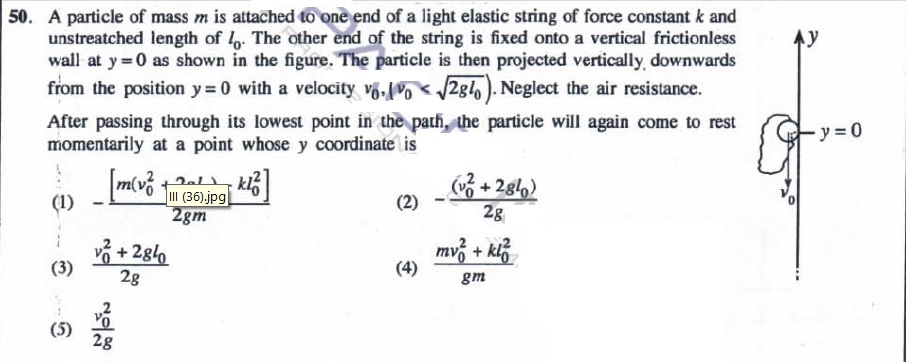How to find the maximum distance traveled by a ball of mass M, tied to a light elastic string, projected vertically downwards with an initial velocity of Vo?

It is given that;
spring constant -k
Initial length - Lo
Vo < #sqrt(2gLo)#

It is given that;
spring constant -k
Initial length - Lo
Vo <
2 Answers
Explanation:
Due to conservation of energy, the particle will pass via its starting point with upward velocity
Because:
#v_o lt sqrt(2gl_o)#
Then:
#1/2m v_o^2 lt m g l_o #
ie the particle will stop before the string extends. All of its energy will be in the form of gravitational PE.
If it rises to height
(5)
Explanation:
The ball rises from the lowest point crosses
#"Mechanical PE of string"+"GPE"="Initial KE"#
Inserting various values we get
#"Mechanical PE of string"+mgy=1/2mv_0^2# ......(1)
It is given that
#v_0" < "sqrt(2l_0g)#
#=>"Initial KE"=1/2mv_0^2" < "1/2mxx2l_0g#
#=>"Initial KE < "mgl_0#
#=>"Initial KE"# is not sufficient to raise the ball from the mean position#y=0# to its unstreched length#l_0# on its way up.
As the string remains slack, its mechanical PE
#mgy=1/2mv_0^2#
#=>y=v_0^2/(2g)#

